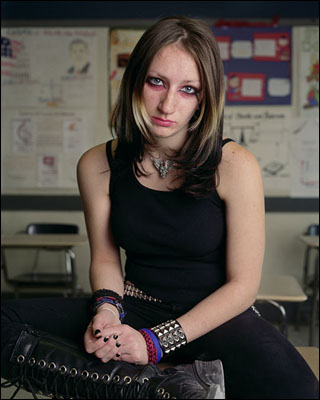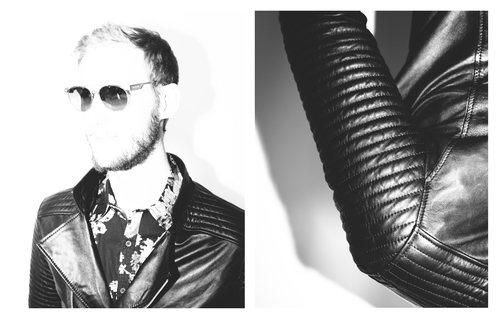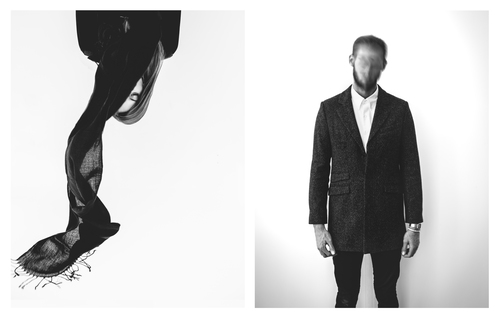Dewoud Bey
Monday, March 28, 2016
Joseph Colon Weekly Post
Deborah Schoen-Weekly Post 9
Rineke Dijkstra


Rineke Dijkstra’s portraits are so captivating that every
time I see them, I pause because they provide something different each time.
Her technique, both visually and conceptually, look to be so simple yet they
provide a depth that can be easily overlooked if one passes by too quickly. She
keeps her backgrounds simple and focuses on lighting to showcase her figures.
Dijkstra usually works in a series that comprise of individual
portraits capturing a person’s state of transition. She keeps the compositions minimal
to avoid assumptions about that individual’s personal life. However, there are
hints left behind that create wonder within the viewer (i.e. scuffed knees,
worn shoes, tired expressions).
For me, having children, the images of the young boy and “tween”ager
reengages my memories of their various stages of adolescence. Meanwhile, , the
young man’s blank tshirt, stripped pin and innocent eyes paired with a
portrait in a uniform and seasoned expression speaks to those who understand
that the military shapes those who choose to join in unexpected ways.
Carra Roots - Weekly Blog Post
Maxine Helfman
Maxine Helfman has a very creative, yet distinctive style of photography. Most of her work is a combination of still lifes with the roles people have in society by switching them. It is said that she did not always have a passion for photography. However, as time went on she started to play with the techniques of artistry, such as lighting and portraiture.
I became attracted to her pieces of african americans that are placed in these very delicate settings and but in the time setting of slavery some may say. She prints her pictures on a textured paper and then places her element of still life in front of that. I like the fact that the people within the photo are creating a moment but then she can completely altar that when she goes back.
She uses colors that compliment the skin tones of those with in the photograph. Maxine also takes into consideration what the person is wearing when adding still pieces. They all correlate and to not take away from the photograph. Seeing these gives me ideas and lets me know that I am in control of the outcome.
Sunday, March 27, 2016
Diana Macaraeg - Weekly Post
Jungjin Lee
Jungjin Lee uses a medium/large format camera for his landscapes. For this series, "Unnamed Road" she had recorded a lengthy process for his prints. Her negative prints would be coated in silver nitrate emulsion, then scanned into a digital format. She would then convert it into a negative again, and have it on a final print of mulberry print.
Her photos appear to be panoramics, but she chooses to crop her photos this size. She elaborates on the textures from plane to plane in her print mediums. All of her photos create a theme of absence, as if it's a single thing there can't be grasped to be missing from a single photo.
I found her workflow to be the most interesting part. She would edit the edits, then print the edits with more edits. Also her preference of creating photos with a shorter vertical axis create a different perspective on her photos.
Hailey Porth Blog Post
Rineke Dijkstra
New York Times Article
Guggenheim Article




Dijkstra's work is one of a kind and distinct. I can tell her work out of crowd of others. Her work makes me feel uncomfortable and vulnerable. And many times I don't know how I should perceive it. She is known for her portraits of people normally in the center of the frame and with the background blurred out.
Her series of adolescents at the beach is not the project that is most uncomfortable for me, but the one that comes to mind whenever I think of her. The images are so uniform but also so diverse in content. It keeps my attention drawn always causing me to look back at these photographs. The people in them are incredibly distinct and don't just have emotions on their face but throughout their whole bodies.
The first photograph shown is actually not from that project but is a self portrait of herself.
I would love to be abel to create portraits like she is able to create. These portraits that are so unique but so similar. I would also love to have the guts to be able to ask someone in their bathing suit to take their photograph!! There had to of been ALOT of rejection in the midst of that. People hate having their photo taken in their bathing suit... well I know I do. LOL
New York Times Article
Guggenheim Article




Dijkstra's work is one of a kind and distinct. I can tell her work out of crowd of others. Her work makes me feel uncomfortable and vulnerable. And many times I don't know how I should perceive it. She is known for her portraits of people normally in the center of the frame and with the background blurred out.
Her series of adolescents at the beach is not the project that is most uncomfortable for me, but the one that comes to mind whenever I think of her. The images are so uniform but also so diverse in content. It keeps my attention drawn always causing me to look back at these photographs. The people in them are incredibly distinct and don't just have emotions on their face but throughout their whole bodies.
The first photograph shown is actually not from that project but is a self portrait of herself.
I would love to be abel to create portraits like she is able to create. These portraits that are so unique but so similar. I would also love to have the guts to be able to ask someone in their bathing suit to take their photograph!! There had to of been ALOT of rejection in the midst of that. People hate having their photo taken in their bathing suit... well I know I do. LOL
Amanda Page Stephens Weekly Post
Dianne Arbus
Circus Freaks
Diane Arbus (Diane Nemerov) was born in 1923 to the Jewish family in New York that owned the department store called Fifth Avenue. At 48 in 1971 she took her own life by ingesting barbiturates and slashing her wrist. During her short life, Arbus accomplished great fame. For 10 years, she had a commercial photography business with her husband that had works published in all the great fashion magazines. Arbus hated fashion photography so she quit it in 1956. She then began studying photography at the New School and exhibiting. She is known as the greatest female photographer of her time.
Arbus started with a 35 mm Nikon camera. She eventually moved on to a twins lens reflex Rolleiflex.
Arbus' series documenting circus freaks was revolutionary for her time. She reveals a world which many choose to ignore.
I found a quote that really speaks of her feelings of "freaks". I feel as if it sheds light to why she wanted to document them.
"Freaks was a thing I photographed a lot.... Most people go through life dreading they'll have a traumatic experience. Freaks were born with their trauma. They've already passed their test in life. They're aristocrats."
For me, these images evoke the many sides of a freak show. The sadness, the seriousness, the happiness. All the images are haunting and powerful.
Bradley Manley Weekly Artist Post
Balarama Heller
Balarama Heller is a New York based photographer. These beautiful night time images are from his project that took place in the Florida Everglades. Using a flash he is able to capture the wildlife that inhabits this amazing terrain
Heller uses the night time to his advantage to capture the animals during their night activities. He gathers both far and close upshots, revealing the animals texture and size. Since it is night, there is not much of background to go by leaving the focal point on the animals.
I think these photos show the relationship between nature and humanity. Most of these animals cause trouble for residents and are often killed instead of placing them back in their habitat. These photos shed light on their importance.
Nini Norris Weekly Post 10
Olivia Bee
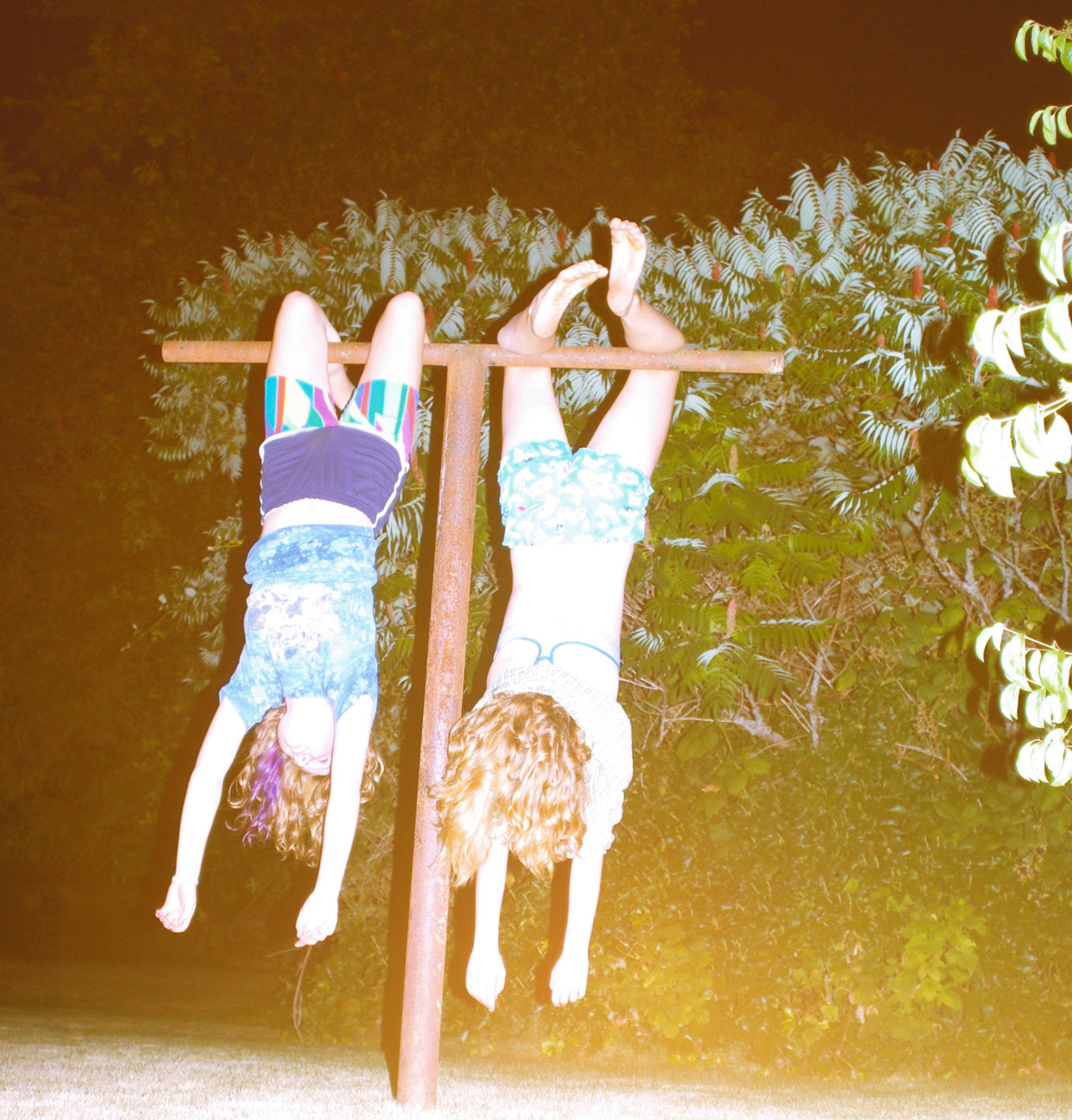
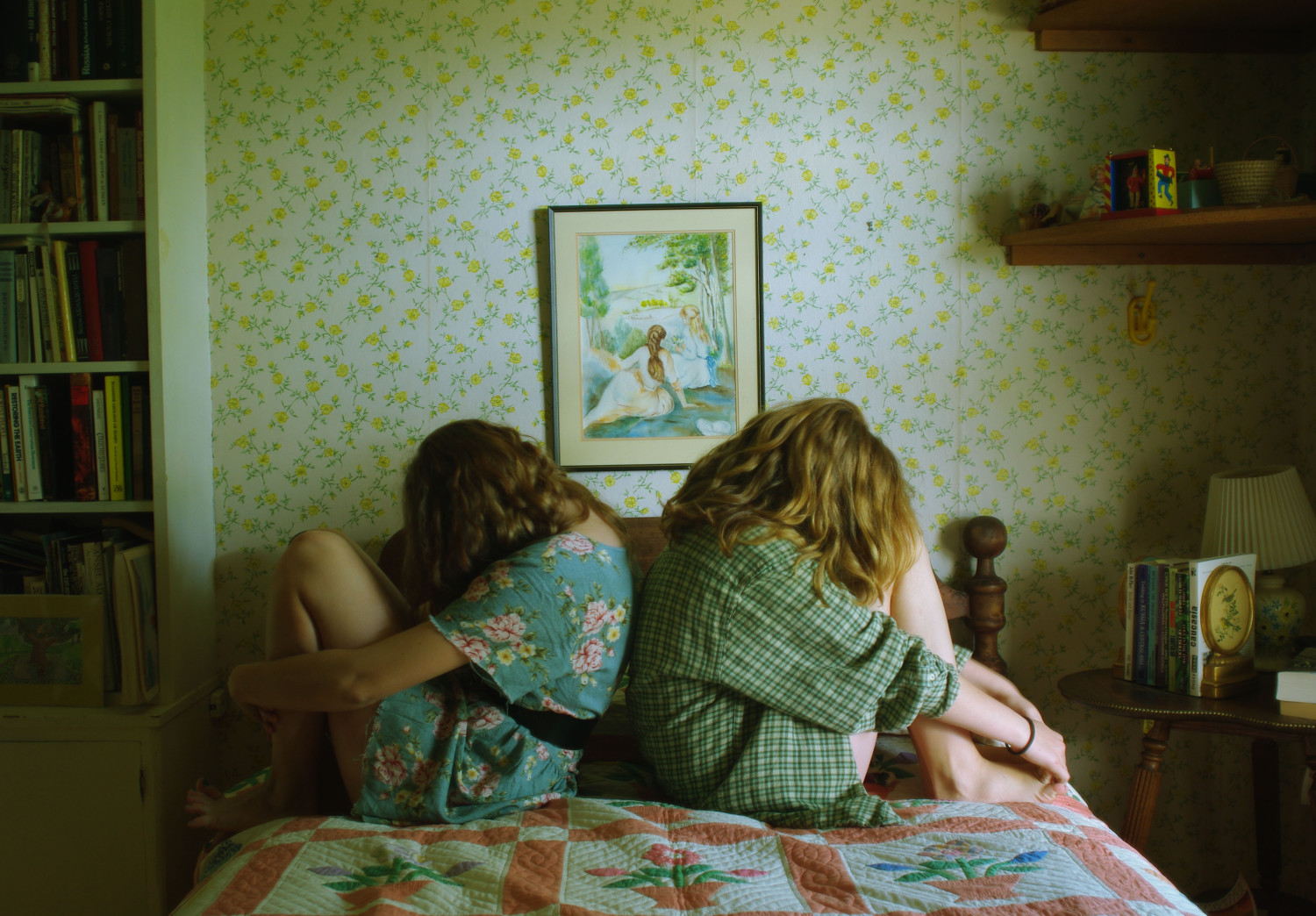
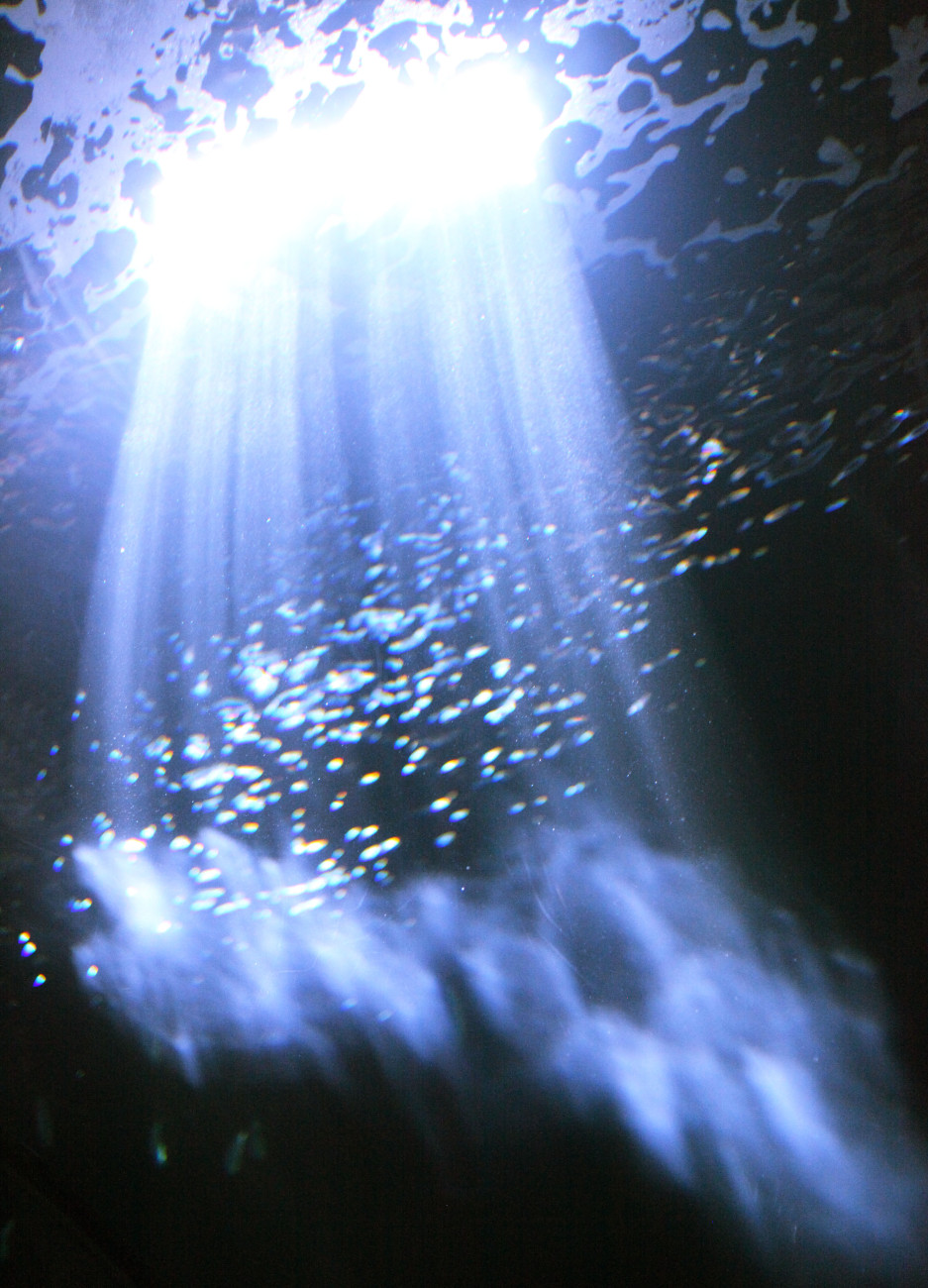
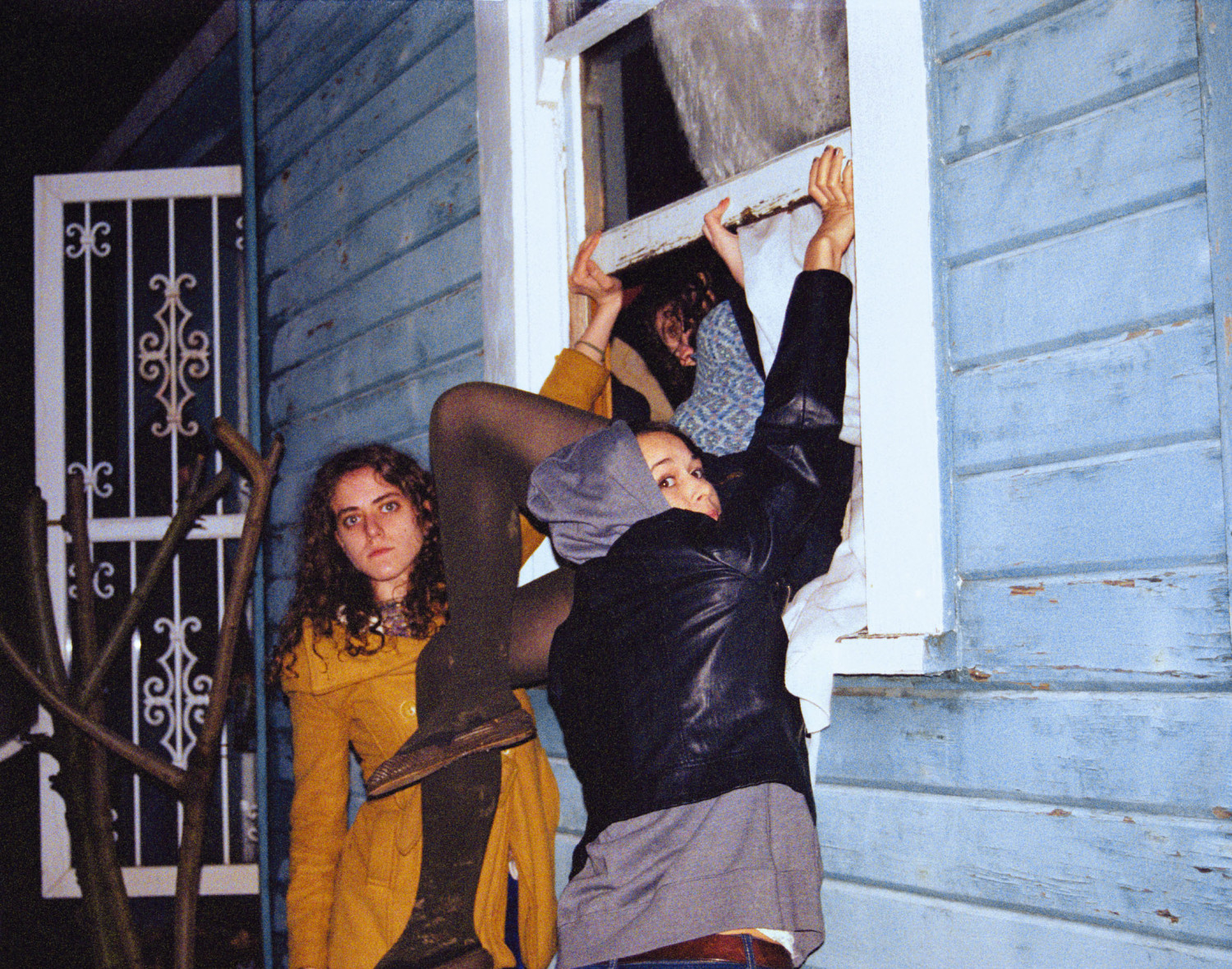
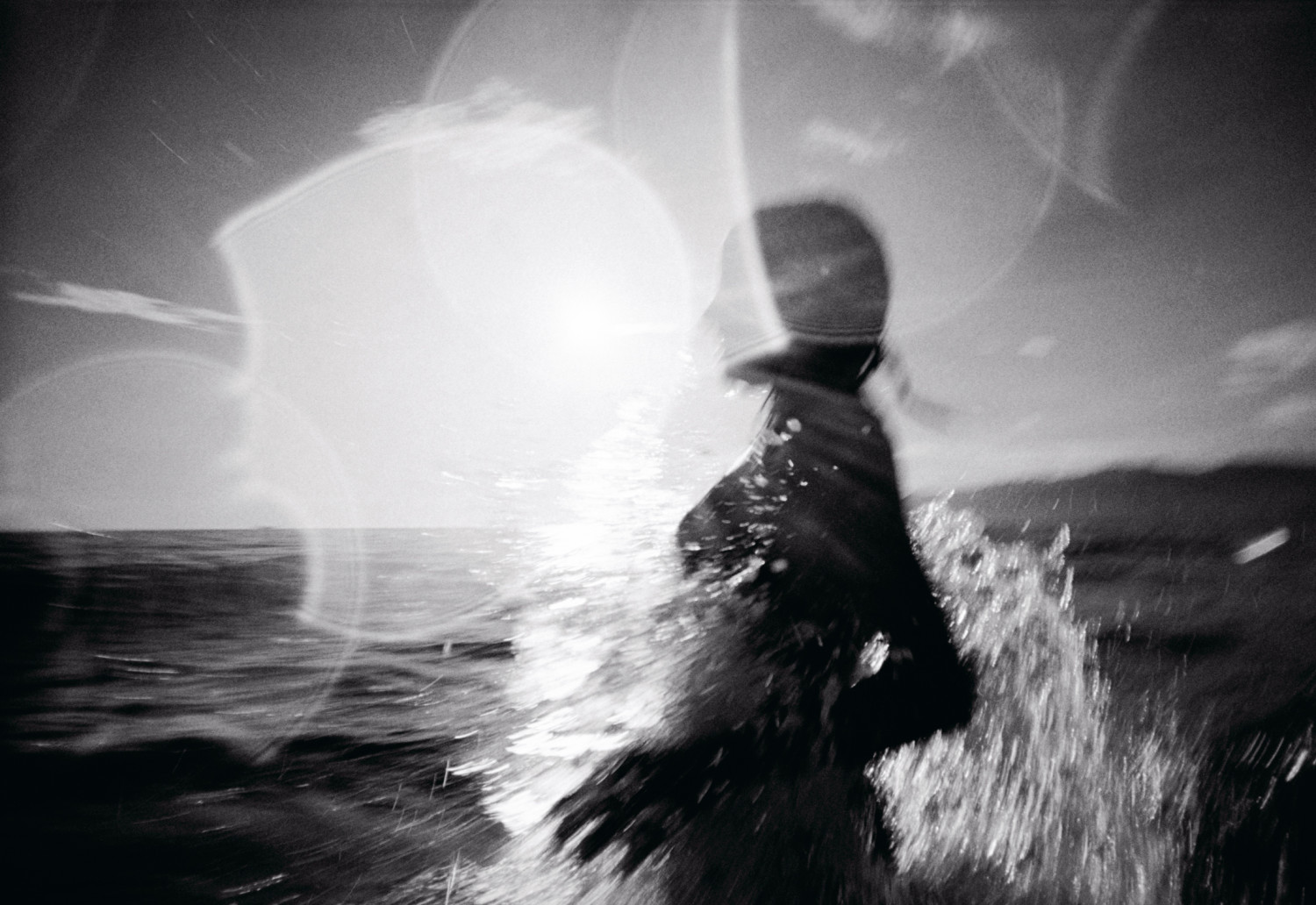

1.) Olivia Bee's photo book is entitled Kids in Love and features 2 series-- Kids in Love & Enveloped in a Dream. Bee shoots in color and black and white film. Her work includes portraits, self-portraits, landscapes, and more.
2.) Olivia Bee's photo book features two different series, however they both have to do with growth. They work together to create a nostalgic look on adolescence. "Because Kids in Love is a book about firsts— first kisses, first heartbreaks— every image within is impressed with the knowledge that these rites of passage can never be lived again. She and her friends exist as if inside a confidential and precarious bubble that inevitably bursts the instant the photo is taken. Nostalgia for Bee is like a drug, it’s that imminent sense of loss that amplifies the volume on her otherwise hushed encounters."
Her photos are described as a look into the mind of a teenager. The self-portraits are a wa,y that as a teen, she learned to trust herself and a reminder of memories easily forgotten, but that at the time feel dramatic.
3.)Bee's photo book does a great job of treating moments happening now feel like memories. Nostalgia is something, I think, my generation is obsessed with. She captures the in between moments, things that don't feel as important. Between the two series, the style and subject matter seem to grow as the artist does.






1.) Olivia Bee's photo book is entitled Kids in Love and features 2 series-- Kids in Love & Enveloped in a Dream. Bee shoots in color and black and white film. Her work includes portraits, self-portraits, landscapes, and more.
2.) Olivia Bee's photo book features two different series, however they both have to do with growth. They work together to create a nostalgic look on adolescence. "Because Kids in Love is a book about firsts— first kisses, first heartbreaks— every image within is impressed with the knowledge that these rites of passage can never be lived again. She and her friends exist as if inside a confidential and precarious bubble that inevitably bursts the instant the photo is taken. Nostalgia for Bee is like a drug, it’s that imminent sense of loss that amplifies the volume on her otherwise hushed encounters."
Her photos are described as a look into the mind of a teenager. The self-portraits are a wa,y that as a teen, she learned to trust herself and a reminder of memories easily forgotten, but that at the time feel dramatic.
3.)Bee's photo book does a great job of treating moments happening now feel like memories. Nostalgia is something, I think, my generation is obsessed with. She captures the in between moments, things that don't feel as important. Between the two series, the style and subject matter seem to grow as the artist does.
Kweku Asafu-Adjaye Weekly Post - Edward Honaker
Edward Honaker is quite different from most photographers people hear about. He is different because rather than taking portraits that portray other people or his general self, he takes portraits to convey the subject of depression. Through experience, a lot of the time people who suffer from such tend to not feel safe or normal in their own skin.
His photographs such as the ones listed below show this very action in that he has a mostly full body portrait but the faces are blurred out. This action can be achieved through the simple means of shaking the head and keeping the body still. Sometimes he flips the image, other times he (rather than blurring the whole face) blurs just the mouth. I just feel like the whole ghosting effect really emphasizes on his story.
I enjoy how his portraits portray depression and sadness because this is something I am handling myself. He does have other types of photography but he tends to focus on one subject. Just as I tend to focus on a subject but still do other conjectures.
His photographs such as the ones listed below show this very action in that he has a mostly full body portrait but the faces are blurred out. This action can be achieved through the simple means of shaking the head and keeping the body still. Sometimes he flips the image, other times he (rather than blurring the whole face) blurs just the mouth. I just feel like the whole ghosting effect really emphasizes on his story.
I enjoy how his portraits portray depression and sadness because this is something I am handling myself. He does have other types of photography but he tends to focus on one subject. Just as I tend to focus on a subject but still do other conjectures.
Christina Crespo-Blog 12
Haruhiko Kawaguchi
Haruhiko Kawaguchi photographs people inside vacuum sealed plastic bags used for futons and comforters. He meets his models in nightclubs and photographs them on his kitchen floor. The photos take about 10-20 seconds.
Kawaguchi places his models against different color backgrounds. It seems that he does this according to the models clothing or lack there of. It is interesting how some of the models appear completely content and others seem to be screaming.
I was drawn to this work because it reminded me of the different types of people there are. Sealed up in these bags some of these models seem so artificial and others are naked and seem so content in their natural state. I think this work also demonstrates how couples can become one.
Saturday, March 26, 2016
Mollie Schaidt Weekly Post 10
Eugene Richards
- Eugene Richards for awhile was trying to get a close look to the drug scene. After trial and error he couldn't, and then he realized how powerful the drug world was. He teamed up with Life reporter Ed Barnes and they went to the Red Hook Housing project located in Brooklyn, New York where these photos were taken. Richards wasn't interested in catching the dealers and addicts just wanted to see what the life was like up-close and personal.
- Richards uses black and white portrait photography some of the dealers, and some addicts. Richards wanted to learn what their world was like and how it effected their lives.
- In these photos I see both sides the users/dealers and the other people effected such as children. The last photo of the child looking out the small window, and it took me a second to realize the adult behind him. This photo just shows me what impact it has on someone so young! It's heartbreaking growing up in that situation and that's all they know. The first two photos just the desperation in the women's eyes for the high of the drug is unreal, and speaks volumes how addicted they are.
Tuesday, March 22, 2016
Catherine Meadows Weekly Post 9
Juno Calypso was born in 1989 in London, where she currently lives and works in as well. She received her Bachelor's in Photography in 2012 and has won 4 awards since obtaining her degree. She has also been in a couple solo exhibitions in London, but is usually in group exhibitions all over the world.
Juno Calypso has created a series of self portraits in which she stages herself as a fiction character named Joyce. Each scene gives off a sense of uneasiness and sadness. A majority of her photographs have an 80s vibe to them, as she includes objects that were primarily used during that time. The scenes themselves also give off an 80s vibe as well, which to me, is caused by the light pink color repeatedly appearing almost everywhere in each photograph. I feel that she is communicating with the issues of femininity in her Joyce series.
Personally, I find her work somewhat uncomfortable to look at, but at the same time I think that they're beautiful shots. I didn't know that these were self-portraits until I read more about her on her website and to me, that adds to the quality of the work. I love the way she plays with perspective and framing. The repeated use of the mirrors I feel adds to her feminine theme because of the idea that women need to spend hours in front of a mirror in order to be what society deems acceptable.
Nini Norris: Weekly Post 9
Gabriela Herman The Kids
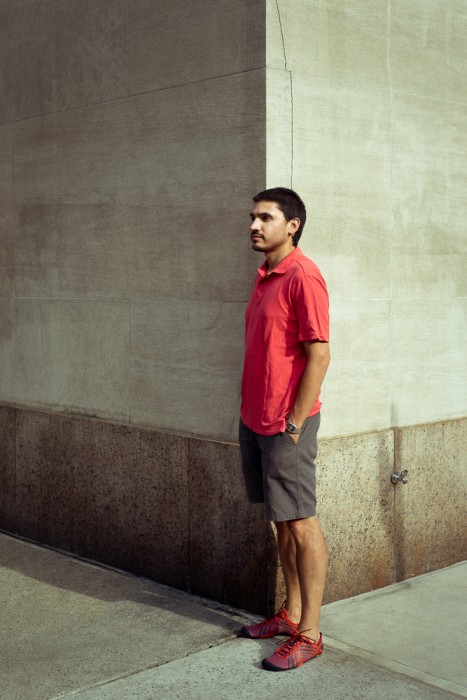
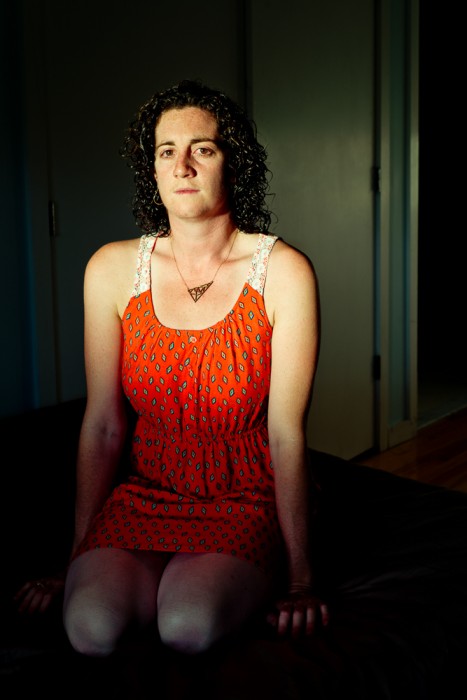
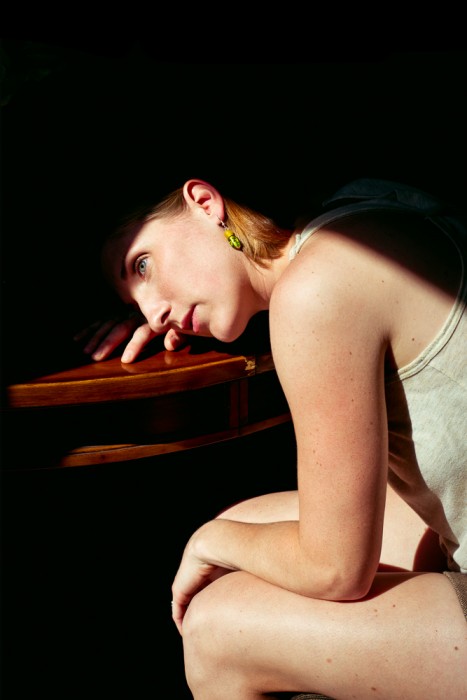

1. Gabriela Herman uses a number of different portrait styles in her series entitled "The Kids". She uses both landscape and portrait style photography, all of which are in color. For the most part, her subjects are all in the center or slightly off center of the frame. All portraits also share color as a commonality that ties them together.
2. The artist's thematical intent was to capture "the kids" of one or more LGBTQ parents. She accompanies each picture with their story. The wide variety of portraits and in which conditions they were captured-- such as someone halfway in light and dark, or by a fence, reflects the variety of stories.
3. I think the idea of this project is awesome. In divorce or other could-be traumatic events a child can face, most people don't think to ask the kids how it affected them. This is another situation where people just speak for the children. Herman herself states "Judges, academics, pundits and activists keep wondering how children are impacted by gay marriage. Maybe it’s time to ask the kids” and I think that just about sums up the whole project justly. This is a hot issue right now and to not only talk about it but create a diverse and beautiful range of portraits is awesome.




1. Gabriela Herman uses a number of different portrait styles in her series entitled "The Kids". She uses both landscape and portrait style photography, all of which are in color. For the most part, her subjects are all in the center or slightly off center of the frame. All portraits also share color as a commonality that ties them together.
2. The artist's thematical intent was to capture "the kids" of one or more LGBTQ parents. She accompanies each picture with their story. The wide variety of portraits and in which conditions they were captured-- such as someone halfway in light and dark, or by a fence, reflects the variety of stories.
3. I think the idea of this project is awesome. In divorce or other could-be traumatic events a child can face, most people don't think to ask the kids how it affected them. This is another situation where people just speak for the children. Herman herself states "Judges, academics, pundits and activists keep wondering how children are impacted by gay marriage. Maybe it’s time to ask the kids” and I think that just about sums up the whole project justly. This is a hot issue right now and to not only talk about it but create a diverse and beautiful range of portraits is awesome.
Monday, March 21, 2016
Diana Macaraeg - Weekly Post
Mayumi Suzuki
Mayumi Suzuki is a Japanese photographer residing in Tokyo, Japan. In 2011, a massive tsunami had hit the coast of Japan, and ultimate destroyed her family's photography business. Throughout her series, she captures the aftermath of the tsunami within the community.
Suzuki's theme is to capture the effects that this tsunami still has on Japan's society. Within her portraits, she chooses to use natural lighting with a natural pose. Her use of shadows and lighting collectively creates a sense of everyday dreariness and feeling of hopelessness.
What impacted me the most of Mayumi Suzuki's work, was that even though the Japanese tsunami was enormous in the news, was that there are still many stories and struggles that never come to the limelight often. Especially in today's society, we all tend to focus on ourselves, or useless pop cultural updates. Japan is one of the most developed countries in the world, and I can only imagine what other countries that have been dealing with.
Diana Macaraeg - Weekly Post 10
Juno Calypso
Juno Calypso was born and raised in London, UK. For her series, Joyce, she created a fictional character of herself who is molded from society's perception of women beauty. She spoke that she never was comfortable with taking photos of others, so creating this character is more intimate to her than ever.
She chooses to play with color and the awkward/uneasy props to provoke the audience. It's commonly known that blue and pink usually represent gender, and Calypso presently showcases it's effect in women in today's society. The mask is a representation of a woman living behind a mask in today's men society, and uses her sexuality as a symbol of how women are obsessed with their own upkeep.
This type of photography isn't one that I usually would choose to look over, but the uneasiness and creepy factor most certainly leaves a mark. With her series being very provocative, borderline scary, it only just helps the theme that Joyce is trying to audience.
Subscribe to:
Posts (Atom)



